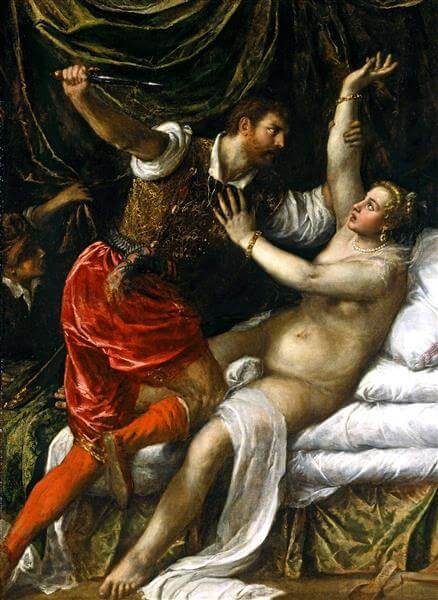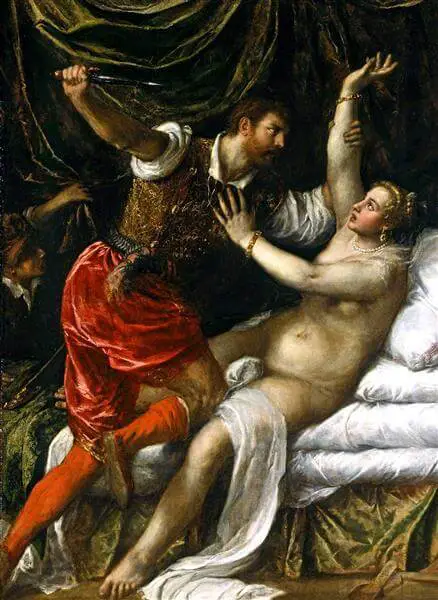Title of Artwork: “Tarquin and Lucretia”

Artwork by Titian
Year Created: 1570
Summary of Tarquin and Lucretia by Titian
Tarquin and Lucretia is a late masterpiece by the Italian painter Titian, who created it when he was over 80 years old. It shows a scene from ancient Rome when a prince named Tarquin raped Lucretia, the wife of his friend. Lucretia later killed herself to preserve her honour, and her death sparked a rebellion that ended the monarchy. The painting is remarkable for its vivid colours, dramatic lighting, and realistic expressions of the characters. It was made for the king of Spain, who was a great fan of Titian’s art. The painting is now in a museum in England, and there are two other versions of the same story by Titian in different locations.
All About Tarquin and Lucretia by Titian
The Italian Renaissance master Titian painted Tarquin and Lucretia in 1571, when he was already in his eighties. It portrays a dramatic event in Roman history when Sextus Tarquinius, an Etruscan prince, sexually assaulted Lucretia, his friend Collatinus’ wife, after threatening to kill both her and a slave if she resisted. The following day, Lucretia confessed the crime to her husband and father before killing herself by stabbing. This uprising resulted in the overthrow of the king and the founding of the Roman Republic.
One of Titian’s final paintings, it demonstrates his mastery of colour, light, and expression. In addition, he depicts the struggle between the rapist and his victim with a high level of realism, making it one of his most violent and disturbing subjects. On Lucretia’s slipper, the painting bears Titian’s signature, indicating that he completed it entirely. Philip II of Spain, a devoted collector of Titian’s works of art, ordered it. The painting is currently housed in Cambridge, England’s Fitzwilliam Museum.
Three depictions of this story by Titian were painted, each with unique poses and details. The other two copies are housed in private collections in Bordeaux and Vienna’s Akademie der bildenden Künste, respectively. While the figures’ gestures and facial expressions vary in the Bordeaux version, they are more loose and unfinished in the Vienna version. These versions might have been created by Titian with assistance from workshop members or assistants, or they might be copies made by other artists. It’s possible that Titian’s interest in this tragic tale is a reflection of how he feels about injustice, ageing, and mortality. In a letter, he claimed that this painting was “an invention involving greater labour and artifice than anything, perhaps, that I have produced for many years”.

























